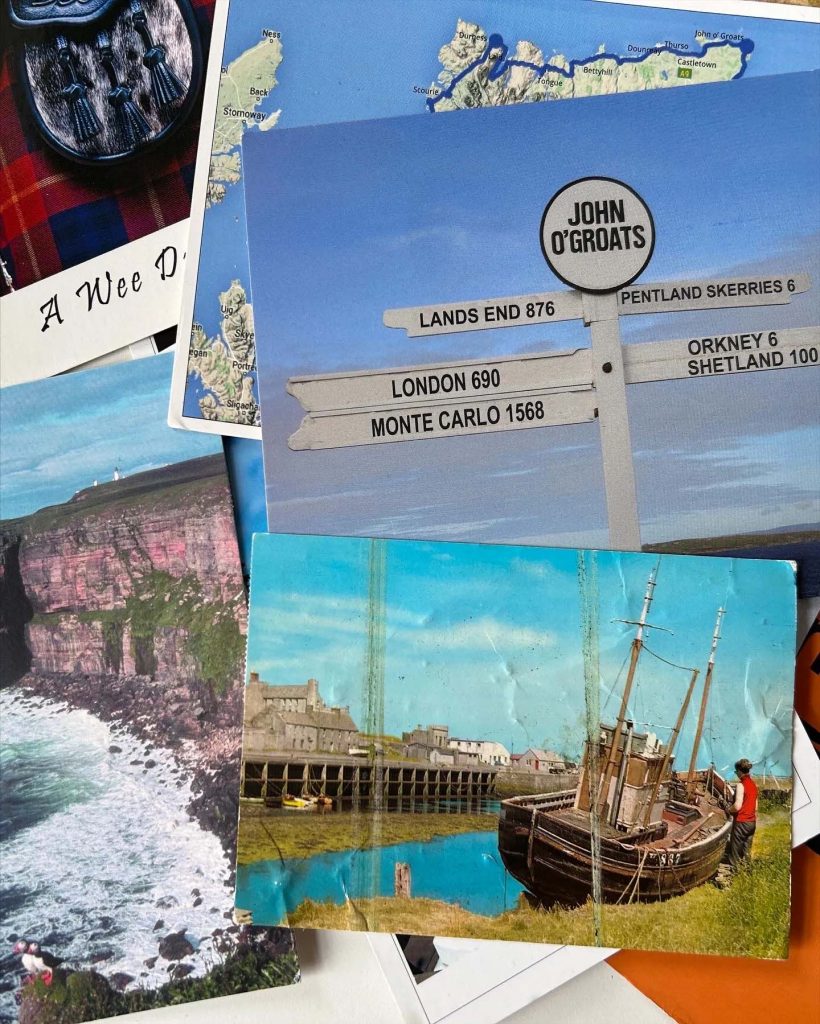
Claudia Zeiske’s Slow Coast 500 is a long-distance walk from Dunnet Head to Berwick-upon-Tweed along the entire coast of the North Sea in Scotland.
As part of the release of the hardcover release of my book, Walking as Artistic Practice (softcover comes out in April!), I’m going to be publishing some brief interviews with the various artists, authors, researchers, creatives, collectives, and platforms whose art practice, written material, or other works I cite and mention.
My twelfth interview in this series is with Claudia Zeiske who is a curator/producer, a cultural activist and a ‘Walk Curator’ whose practice is based on a balanced approach between artistic criticality and community involvement. Employing anthropological methods, her experiences come from participatory visual arts, linking local activities with global realities.
As a walking curator, her interest lies in path-making as a cultural practice. With friendship at heart, her walks combine a desire for a slower pace of life with socio-politically and environmentally sensitive issues. For more than a decade, her walking art projects have varied from short to long, in her vicinity or further afield, connecting places, communities and people along the way. Her walking prose promotes thinking aloud.
EM: How would you describe Walking Lunch to someone who is not familiar with it?
CZ: Walking Lunches are a series of moving meetings between Claudia Zeiske and artists, arts professionals and other participants. Claudia provides a written agenda prior to the walking lunch, as well as sandwiches and tea during the walk. The lunch partner brings a camera and takes three pictures (portrait, landscape, still-life) on the walk. Afterwards Claudia writes minutes and archives them, along with the images taken by the partner.
Walking Lunch is a critical play on the concept of Working Lunches designed for busy people to maximise time. It does not only bring people together to merge working and eating, but also adds our need for physical exercise to the equation.
EM: Can you talk about one of your most recent walking projects that you are most excited about?
CZ: This week I completed Slow Coast 500, a long-distance walk from Dunnet Head to the Scots-/English Border in Berwickshire along the entire coast of the North Sea in Scotland. The 63 day/1150km long walk borrows its name from the North Coast 500 route designed to attract tourists to drive around northern Scotland. Slow Cost 500 considers the role of tourism in making (or breaking) places. Often intended as a boost to local economies, tourism can contribute to making or breaking places for local communities and their environment.
Along the way, I was carrying an orange linen tablecloth the colour of an OS ‘Explorer’ map, using it as a picnic blanket to encourage conversation. Step by step and stitch by stitch, I embroidered it along the long way to the Scottish-English border, questioning the role and impacts of tourism today. For further documentation, I was sending a daily postcard – written in my walking prose – home to Art Walk Projects in Portobello who commissioned the project. This served as a visual diary of the walk. https://www.artwalkporty.co.uk/commission/slow-coast-500/
EM: Your recent Phd focuses on Transformational Fieldwork in rural contexts. Can you share more about this research?
CZ: While a lot has been written in the past two decades about the impact of participatory arts on people in urban places, my practice based research aims to fill the gap in relation to the rural context – often places with little traditional arts provision.
Based on the development of Deveron Projects in Huntly/Aberdeenshire, where the ‘town is the venue’ rather than a gallery or arts centre, my aim is to show how cultural provision can be framed through a combination of durational commitment to place and effective cultural management.
To do this, I have been reflecting on twenty-five years of working in the small town community setting, examining retrospectively my role as curator/producer. Underpinned by Scottish philosopher Patrick Geddes’s Place/Work/Folk thinking machine and artist Joseph Beuys’s idea of social sculpture as well as other thinkers’ engagement with place and social context, I show how we can create a cultural ecology that assists the well-being of rural communities.
The study is based on four case studies that explain how the collaboration with artists can lead to transformative change through participatory practice led projects. Through them, my inquiry leads from the identification of socio-political themes to collaborative development of the projects between community, artists and ourselves, the ‘Anthro-Producers’.
The research shows why and how art provision in rural locations can be structured sustainably through field-research akin to anthropological methods. The ensuing approach I call Transformational Fieldwork, a form of cultural management that combines social engagement with research methods relating to long-term participatory observation. Structured around 16 inter-woven administrative/artistic principles, this framework offers a tool kit for continued arts development in the rural community context.
My contribution to the curatorial sustainability discourse therefore is to show step-by-step how Transformational Fieldwork can contribute to rural development and community well-being in places that, unlike urban cultural contexts, have limited involvement with contemporary art.